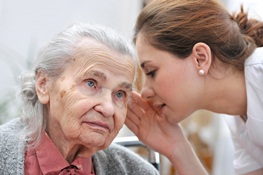Lending an ear to age related hearing loss

Related topics
Health Health, Demographic Change and Wellbeing Austria Belgium Cyprus France Germany Hungary Italy Netherlands Poland Spain Sweden United Kingdom Switzerlanddate: 24/01/2014
Project: Assessment of hearing in the elderly: ag...
acronym: AHEAD III
See also: Info-centre
Contact: http://www.ahead.polimi.it/index.ht...
Despite the considerable negative consequences ARHL can lead to, it has remained largely invisible, overlooked both by the medical community and broader population. Most people affected by ARHL simply accept it as a natural part of the ageing process and only the severest cases, for which hearing aids are required, get treated. Similarly, research during the past decade primarily focused on congenital hearing loss – which can be successfully treated in around 80 percent of afflicted newborns.
Only in the last five years has this focus slowly begun to shift. According to Professor Ferdinando Grandori from the Institute for Biomedical Engineering of the National Research Council in Milan, Italy, one of the most important factors driving that change are demands made by ageing baby boomers – those born between 1945 and 1965. Baby boomers want to maintain active social lives even in their twilight years, and good hearing is an important part of communication. These people therefore seek treatment not just for serious impairment, but for diminished ability as well.
Screening technologies have advanced to a point where it is possible to detect subtler function loss. More comfortable hearing devices (referred to as open-fit because they do not seal the ear) have also been developed. However ARHL continues to be untreated in many cases, because despite technological advancements and growing demand, there is no general awareness of the condition and its consequences.
To change this, a three-year coordination project, AHEAD III, was launched in 2008. With €1.1 million in EU funding, AHEAD III brought together 18 partners from across Europe. The project aimed to change the type of screening procedures used and to establish when and what tests should be carried out. “We were also coming up with recommendations for governments on how best to implement these screening procedures, so it was very productive to have such an interdisciplinary and international team,” said Grandori, the project’s coordinator.
ARHL is an important issue for European industries as well, since approximately 80 percent of worldwide hearing devices are manufactured in the EU. “Of course these manufacturers were interested in our work, but because of the EU funding we received, we could think about ARHL issues without any direct pressure from manufacturers,” said Grandori.
Before AHEAD III, there was little appreciation of the difference between loss of organ functionality and loss of ability. A typical screening test will have a person listen to a series of whistles to assess their hearing ability. However, hearing impairment cannot be reduced to a diminished ability to hear whistles. That type of screening merely tests hearing sensitivity and thus only gives a partial picture of disability.
The World Health Organization (WHO) model of International Classification of Functioning, Disability and Health (ICF) actually indicates that it is just as important to recognise the lived experience of a condition, as it is to identify its cause. AHEAD III therefore proposed that screening tests should measure difficulties in hearing everyday sounds, such as speech, rather than whistles. Only those types of screening tests offer a complete picture of the lived experience of ARHL.
“These screening tests are fundamental, because the first step of care is identifying those who need it,” Grandori said. Since AHEAD III finished in October 2011, medical experts from around the world, including India and China, have begun to pay closer attention to ARHL. “I am very happy that it was European research which brought international attention to ARHL,” Grandori said. Several pilot adult hearing screening programmes have already been carried out in Europe. For example, on the Greek side of Cyprus everyone who was 63 or older had their hearing screened with tests that assess speech understanding.
As per usual in questions of public health and wellbeing, it will probably take at least another four or five years before governments have devised mechanisms to deal with ARHL. Even now, however, adults suffering from diminished hearing ability can take comfort in the fact that their concerns are no longer falling on deaf ears.
